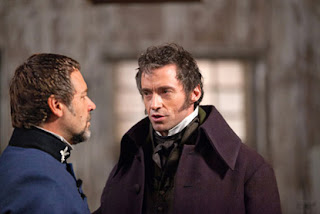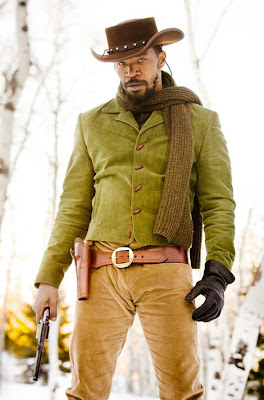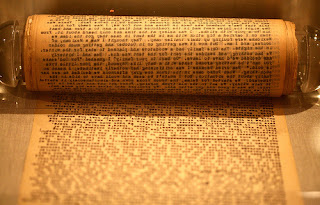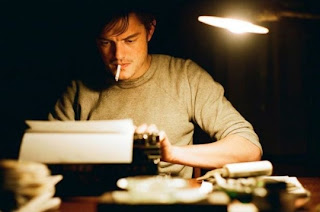Shame on “Liz & Dick”
 |
| What is he doing, biting her? Is this another Twilight? |
 |
| How can you compare that beauty… |
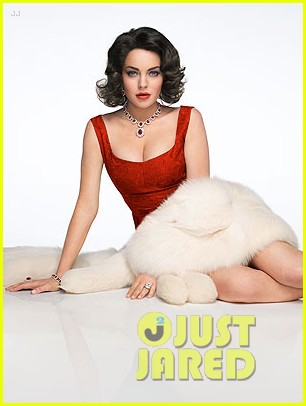 |
| …with THIS ? |
 |
| This is just ridiculous.
Now let’s look at some real beauty, shall we? |


LES MISERABLES – TRAILER REVIEW
E.D
News of the Week
Drive will get a sequel
Looks like every kind of movie is getting a sequel these days. Just days after James Sallis, author of Drive, released its sequel, Driven, he announced that a plan is being made to adapt that novel as well. In the sequel, the hero, using Paul West as a new identity, is living in Phoenix with his fiancée. But after an attack that leaves his girlfriend dead, violence reemerges. Nothing has been said whether or not both Winding Refn and Gosling would be back. But I doubt it could be otherwise.
Michael Emerson hired by Woody Allen
 |
| The Master |
 |
| Low Life |
 |
| To the Wonder |
Viddy Well !
E.C
lire le billetPROMETHEUS – Did Scott lose the sacred fire?
Because we have watched the trailer and because we know the tagline to be ‘The search for our beginning could lead to our end’, it was naturally that we put two and two together to figure out this would be about humans wanting to know more than they are supposed to, and being punished for it. We even recall that legendary Alien scene where a lovely-looking E.T. violently exits John Hurt’s convulsing body while everybody around screams in sheer horror, and how it might all be linked with Prometheus’ punishment. And indeed, without revealing too much, there is a similar scene in Prometheus.
 |
| Prometheus, by Paul Rubens |
 |
| John Hurt in Alien (1979) |
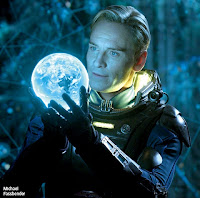 Noomi Rapace is excellent as a new Ripley (same haircut as Sigourney Weaver, same tendency to walk around the ship in underwear). She is the only human worth saving.
Noomi Rapace is excellent as a new Ripley (same haircut as Sigourney Weaver, same tendency to walk around the ship in underwear). She is the only human worth saving.Viddy Well,
CLASSIC OF THE WEEK: AUDREY HEPBURN FILMS, PART II
http://www.youtube.com/watch?v=G5a8pXMe23I
. The thriller aspect of the film was so well done that when it was released, many people thought that Hitchcock had directed the film thus leading to the film’s famous nickname: “the best Hitchcock film that Hitchcock never made”.
DOWNTON SIXBEY PART 1: episodes 1 and 2.
For those of you who are now familiar with the period drama Downton Abbey, you will not have to wait for next season of this successful British series to get a glimpse of the (sometimes soapy) atmosphere we love.
THE NEWS!
 New pictures from Tom Hooper’s film adaptation of Les Misérables, starring Hugh Jackman as Jean Valjean, Russel Crowe as Javert and Anne Hathaway as Fantine, Cosette’s mother, who is forced to work as a prostitute to provide for her daughter. The film is a musical adaptation of Victor Hugo’s masterpiece, very much in the spirit of the stage musical apparently.
New pictures from Tom Hooper’s film adaptation of Les Misérables, starring Hugh Jackman as Jean Valjean, Russel Crowe as Javert and Anne Hathaway as Fantine, Cosette’s mother, who is forced to work as a prostitute to provide for her daughter. The film is a musical adaptation of Victor Hugo’s masterpiece, very much in the spirit of the stage musical apparently.Viddy Well,
E.D.
COSMOPOLIS: CRONENBERG RÉINVENTE LE VAMPIRE

vivre, pour se sauver, il doit tuer l’origine du mal, le spectre qui hante le monde, le capitalisme : Eric Packer. Robert Pattison est subjuguant de justesse. Après une première partie robotique, il nous dévoile l’humanité du monstre. Comme on empale et décapite un vampire pour l’exterminer, il faut que la mort de Packer, et son retour à l’humanité, passe par la violence physique. Afin d’en être certain, Packer se tire une balle dans la main, hurle de douleur. Le voilà à nouveau homme et mortel. Sa main trouée, comme un stigmate. « The Blood is the Life » : phrase à deux sens. Le sang est la mort de l’homme et la vie du vampire. Mais le sang fait aussi partie de l’imagerie chrétienne : c’est par son sang que le Christ apporte le salut. C’est le sang du Christ que le chrétien boit lors de l’Eucharistie. Dracula, véritable antéchrist, doit aussi verser son sang pour que l’humanité survive. Le sang que doit verser Packer, et que l’on ne verra pas, lui permet d’obtenir ce qu’il a si longuement cherché : la mort, et à travers elle, son humanité. La dernière image du film est celle d’Eric, les yeux ouverts, les larmes coulant sur son visage. Des larmes de bonheur, car il n’a plus à attendre. La mort, « clarté vibrante de [son] horizon noir », est là.
PALMARÈS DU FESTIVAL DE CANNES 2012
Voici le palmarès du jury du Festival de Cannes, présidé par Nanni Moretti.
Prix du court-métrage: Sessiz-Be Deng de L. Rezan Yesilbas
Caméra d’Or: Beasts of the Southern Wild de Benh Zeitlin
Prix du Jury: The Angels’ Share, de Ken Loach
Prix du scénario: Aù delà des collines de Cristian Mungiu
Prix de la mise en scène: Post Tenebras Lux, Carlos Reygadas
Prix d’interprétation masculine: Mads Mikkelsen pour La Chasse de Thomas Vinterberg
Prix d’interprétation féminine: Cosmina Stratan et Cristina Flutur pour Au-delà des collines de Cristian Mungiu.
Grand Prix: Reality de Matteo Garrone
Palme d’Or: Amour de Michael Haneke
Heureusement que la palme est allée à Michael Haneke. Le reste me laisse un peu perplexe. J’aurais aimé un prix pour Thomas Bidegain, scénariste de De Rouille et d’Os de Jaques Audiard. Et un prix important à l’incompris Cosmopolis de David Cronenberg. Que le jury n’ait pas remis un double prix d’interprétation à Jean-Louis Trintignant et Emmanuelle Riva me semble assez honteux. Leur remettre un prix en les distinguant séparément aurait marqué l’histoire.
Palmarès décevant, en ce qui me concerne. Heureusement que la palme a été décernée à un aussi grand cinéaste.
Viddy Well
E.C
lire le billetON THE ROAD… Looking for Dean Moriarty.
 The other characters however are portrayed quite faithfully: Kirsten Dunst as sweet Camille, Sam Riley’s voice highlights the beauty of the text, Tom Sturridge as Carlo Marx turns out to be an interesting revelation, adding a depth to his character that we find lacking in others. Kristen Stewart as a 16-year old Marylou proves surprisingly believable in this difficult part. She is probably the one that conveys the best the ambivalence of her feelings towards Dean, between fascination and hatred, with one beautiful shot of her in the car on the verge of crying. Garrett Hedlund only reaches the potential his character could have had from the sequences in Mexico to the very end. The script did not allow the Dean Moriarty in him to reveal himself sooner.
The other characters however are portrayed quite faithfully: Kirsten Dunst as sweet Camille, Sam Riley’s voice highlights the beauty of the text, Tom Sturridge as Carlo Marx turns out to be an interesting revelation, adding a depth to his character that we find lacking in others. Kristen Stewart as a 16-year old Marylou proves surprisingly believable in this difficult part. She is probably the one that conveys the best the ambivalence of her feelings towards Dean, between fascination and hatred, with one beautiful shot of her in the car on the verge of crying. Garrett Hedlund only reaches the potential his character could have had from the sequences in Mexico to the very end. The script did not allow the Dean Moriarty in him to reveal himself sooner. 

